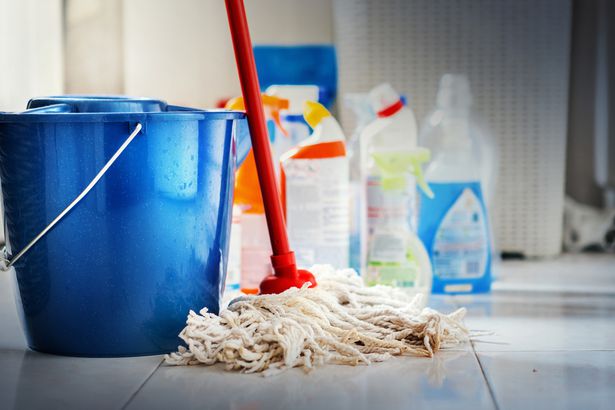There’s a certain satisfaction in crossing off cleaning tasks from a to-do list. Floors? Mopped. Counters? Wiped. Trash? Taken out. At a glance, everything looks tidy. But behind the visible shine, a layer of grime and buildup often goes unnoticed.
Routine cleaning is essential, but it’s only the surface. Beneath that sense of order, there are areas that don’t make it to the checklist—or if they do, they’re rarely given the time and attention they deserve. These forgotten spots aren’t just cosmetic oversights. They can harbor dust, bacteria, allergens, and even mold, slowly undermining the health and comfort of your environment.
Let’s take a walk through the spaces we clean all the time—and uncover what we’re probably missing.
The Kitchen: Looks Clean, Feels Clean, but Is It?
Most people are diligent about wiping counters and washing dishes. But some of the most contaminated parts of a kitchen don’t stand out unless you go looking.
Frequently missed:
- Cabinet handles and drawer pulls: Touched multiple times daily with food on hands, but rarely disinfected.
- Sink drains and garbage disposals: Hidden bacterial hotspots that need more than a rinse.
- Under and behind appliances: These areas collect dust, grease, food crumbs, and pest-attracting residue.
- Fridge shelves and seals: A quick wipe isn’t enough—crumbs and spills often go unnoticed inside corners and rubber seals.
While routine wiping handles the visible mess, these deeper spots benefit from targeted deep cleaning, especially on a monthly or seasonal basis.
The Bathroom: The “Cleaned Most” Room That’s Often Incomplete
Bathrooms feel like they get the most attention, and in many homes, they do. But they’re also the room where shortcuts are most common.
Common oversights:
- Grout lines and caulking: These can collect mildew and require specialized scrubbing.
- Shower curtains or liners: Often left hanging for months without laundering, even though they accumulate moisture and soap scum.
- Behind the toilet base: A place dust and bacteria gather, often untouched during a quick wipe-down.
- Ventilation fans: Full of trapped dust and lint that affect air quality and performance.
Even in commercial restrooms, where daily cleaning is expected, detailed attention to these areas is essential. Professional commercial cleaning crews are often the only ones who regularly address these details, especially in shared facilities.
Living Areas: The Deceptive Comfort Zone
Living rooms and lounges are where families relax, guests gather, and electronics collect dust. Yet, because these spaces aren’t associated with dirt the way kitchens and bathrooms are, they’re often cleaned at surface level only.
Areas most often forgotten:
- Ceiling fans and light fixtures: Out of sight, out of mind—until dust begins circulating every time the fan runs.
- Throw pillows and upholstered furniture: These collect sweat, dust, pet hair, and allergens over time.
- Remote controls and light switches: High-touch surfaces that harbor bacteria.
- Baseboards and the backs of furniture: Overlooked during vacuuming, these areas gather grime slowly and silently.
This is where deep cleaning truly earns its value—not in changing what’s seen, but in refreshing what’s been silently building up for months.
Bedrooms: The Hidden Buildup in Restful Spaces
Bedrooms may feel like clean zones, especially when beds are made and floors are clear. But the accumulation of skin cells, hair, dust mites, and allergens can be significant.
What’s usually skipped:
- Mattress and pillow cleaning: Even with sheets changed, mattresses hold years of buildup without attention.
- Under-bed storage areas: Forgotten bins and boxes collect dust that re-enters air with every movement.
- Closet floors and shelving: These spaces rarely get vacuumed or wiped, even though shoes and stored items contribute to grime.
- Window treatments and blinds: Textiles absorb dust and are rarely part of weekly cleaning routines.
A thorough reset of these areas a few times a year can drastically improve air quality and help support better sleep—something even the tidiest people forget to connect to cleanliness.
The Office (At Home or Work): Clutter’s Favorite Habitat
Productivity can’t thrive in distraction, and clutter is distraction’s best friend. Whether you’re working remotely or sharing an office with colleagues, workspaces are often cleaned the least—but used the most.
Commonly neglected:
- Keyboard and mouse surfaces: Known germ magnets, touched constantly but rarely cleaned.
- Chair arms and bases: Another high-touch point that collects grime and skin oils.
- Under desk spaces: Out of view and out of rotation for vacuuming.
- Cord clusters and surge protectors: These areas collect layers of dust and are difficult to reach without intention.
Businesses that schedule regular commercial cleaning often see improved employee satisfaction—not just because the office is cleaner, but because attention to detail signals care and professionalism.
Beyond the Home: High-Traffic Commercial Spaces
Retail shops, medical offices, restaurants, and coworking spaces face a different kind of cleaning challenge. The volume of people creates wear that’s not always visible—but always present.
Overlooked zones in commercial settings:
- Window sills and interior glass dividers
- Door frames and push plates
- Chair legs and underside of tables
- Floor edges and corners in high-traffic areas
Regular nightly cleaning addresses the basics. But it’s specialized commercial cleaning schedules—monthly or quarterly deep clean rotations—that tackle the spots time forgets.
The Psychology of Missed Cleaning
Often, we don’t avoid deep cleaning out of laziness—we do it because our brains stop noticing what’s been there a long time. This phenomenon is called “clutter blindness.” After a few weeks or months, our minds normalize the dust on the fan or the grime on the baseboards.
This is why objective eyes—whether from professional cleaners or rotating family members—make a difference. A service like Rover House Cleaners can break that visual cycle and refresh your space in places you’ve grown used to ignoring.
Final Thoughts: Details Make the Difference
Routine cleaning is important. But it’s the forgotten corners, the quiet buildup, and the always-overlooked details that truly separate a “tidy” space from a deeply clean one.
Whether you’re managing a household, an office, or a client-facing business, refreshing the hidden areas matters. It shapes how a space feels, how it functions, and how it’s perceived—by you and by everyone who walks through the door.
So the next time you cross off your cleaning checklist, ask yourself: What didn’t I notice today? That’s where your next reset begins.







